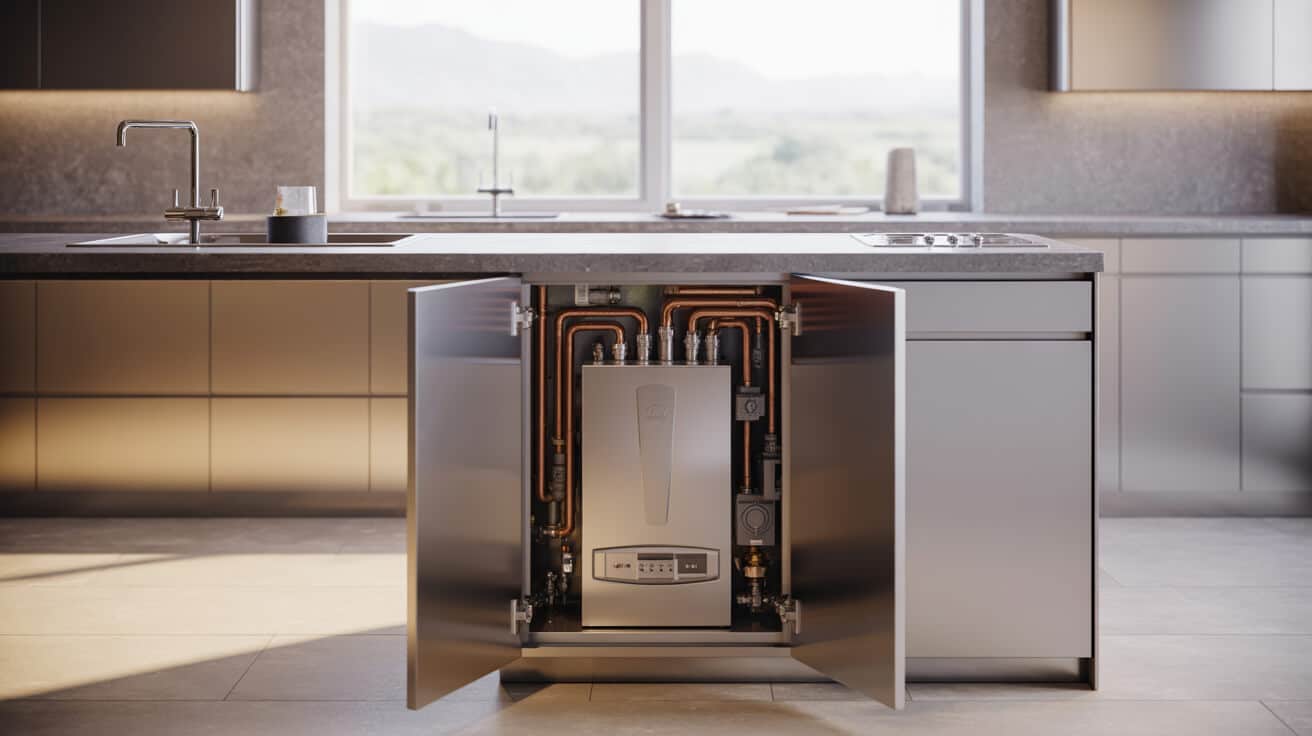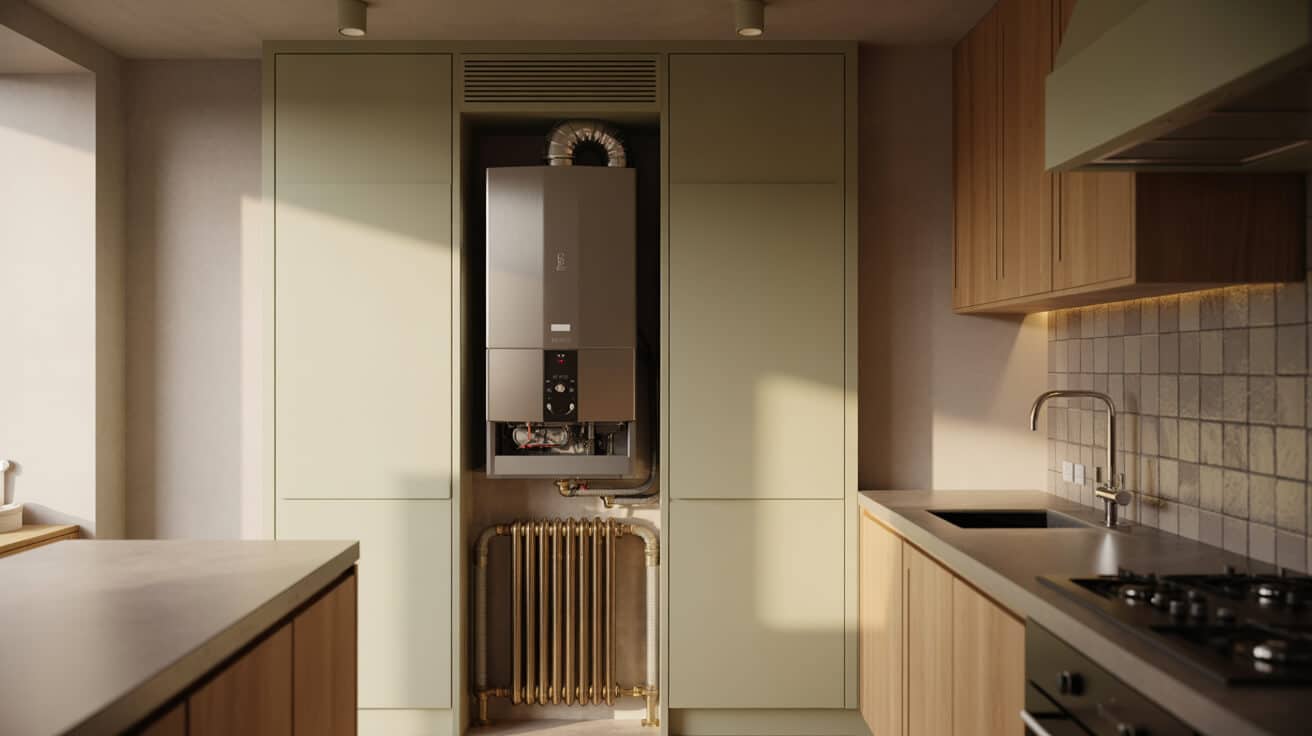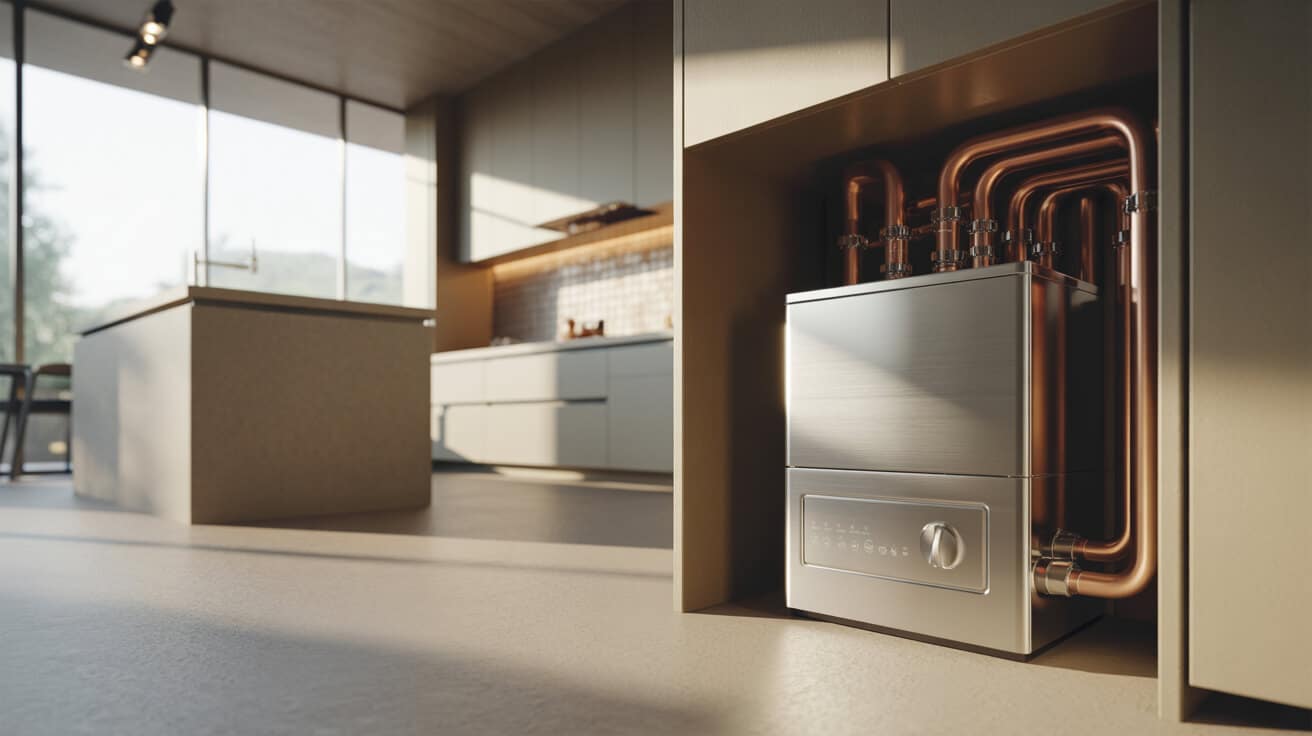Main boilers deliver a balance of accessible technology and legislative alignment, creating resilient heating systems that suit individual homes as well as managed estates. With a focus on modular form, user safety, and repeatable installation outcomes, this product line provides a foundation for energy performance upgrades and compliance-driven asset management. Products are developed in alignment with evolving statutory requirements, enabling homeowners and professionals to address heating needs with confidence regarding long-term system integrity and maintenance cost visibility.
Etymology or name origin
The designation “Main” in heating appliance branding conveys a direct association with reliability and primary utility, reflecting its historical commitment to uncomplicated engineering. Rooted in the legacy of British factory and social housing modernization, the Main brand evolved within larger corporate structures responsible for technological innovation in European gas appliances. Over time, the Main label became associated with products offering standardisation, ease of service, and compatibility with mainstream installation protocols, a positioning that enabled it to remain prominent in markets heavily oriented toward regulatory compliance and cost-conscious upgrades.
Overview / context
Gas boilers under the Main brand fill a practical niche in the UK’s building energy landscape—serving as the thermal engine for hydronic (water-based) central heating and domestic hot water distribution. Their applications range from new-build housing schemes and property refurbishments to complex asset portfolios managed by facilities directors or housing associations. The Main range satisfies performance benchmarks in the context of contemporary energy standards, residence safety law, and the growing drive for remote-control capability and digital diagnostics. Their prevalence is further supported by the reliability of part supply chains, widespread service technician familiarity, and proven track records in public and private housing infrastructure.
For your property or organisation, selecting a Main boiler often means aligning with the latest British and European heating codes without incurring the complexity, cost, or ongoing service ambiguities sometimes associated with emerging or unproven technologies. Through partnerships with firms such as Plumbers 4U, your company gains assurance in the validity of system design and maintenance resources, an essential consideration where long-term compliance and property asset performance are paramount.
History
Early development: The foundation of a modern asset
The postwar period brought widespread gas infrastructure to Britain, prompting a shift from solid fuel heating to gas-fired appliances. Main entered the market with rugged, easily maintainable atmospheric boilers, supporting the rapid postwar council housing boom and private property upgrades. The appeal was direct: products were simple enough for rapid fit and service, but robust enough for long cycles between interventions.
Industrial emergence: Standardisation and adoption
As building standards evolved in the latter 20th century, Main became increasingly aligned with rising demand for system modularity, compact designs, and higher safety provisions, reflecting broader themes in European appliance manufacturing. Integration with group companies allowed sharing of technical platforms, ensuring that property managers and contracting entities could source parts, training, and documentation across mixed-portfolio estates—a boon for estate management and reactive maintenance operations.
Contemporary evolution: Regulation and smart controls
Modern Main products are defined by continuous adaptation to the legislative landscape: mandatory condensing technology, ERP (Energy-related Products) efficiency directives, and Boiler Plus control rules. The shift to digital displays, microprocessor controls, and advanced diagnostic systems opened the door for integration with smart home platforms and predictive maintenance regimes. For high-volume installers and compliance-sensitive property owners, the brand’s ongoing compatibility updates enabled ongoing use during periods of acute regulatory flux. Partnerships with specialist service providers such as Plumbers 4U further reinforced the end-to-end support ecosystem, making care continuity and compliance a seamless aspect of asset ownership.

Concept / description
Appliance mechanics and design
At the core of every Main boiler lies a high-efficiency heat exchanger—constructed from stainless steel or aluminium, engineered to maximise thermal transfer from combustion gases to water. The gas-air mix is precisely managed by a modulating fan-assisted burner and electronic gas valve, governed by a PCB (Printed Circuit Board) which acts as the appliance’s brain. Essential safety features—overheat thermostats, pressure relief valves, flame supervision devices, and condensate management—are integrated to maintain safe and efficient operation.
Interface and system flexibility
Contemporary models are designed with intuitive user interfaces: digital displays communicate temperature, system pressure, and any fault codes, while physical settings are minimised to reduce user error. Main boilers natively support both on/off and advanced protocols like OpenTherm, enabling granular control with modern smart thermostats, zoning modules, and weather-compensation sensors.
Modular and service-friendly construction
Main boilers are renowned for modular chassis that facilitate both initial installation and ongoing maintenance. This approach reduces both downtime and labour costs, supporting affordable long-term care—a feature especially valued by asset managers and service professionals in managed installations.
Functionality / purpose / applications
Main boilers are engineered to heat water for two key purposes:
- Supplying radiators and underfloor heating circuits for space heating.
- Delivering instantaneous or stored domestic hot water, depending on the system variant.
Primary environments
The product line is suited for:
- Single-family homes (all property types)
- Apartments and high-density residences (system/multi-zoned instals)
- Light-commercial environments (e.g., small offices, retail units)
- Social and supported housing schemes (due to service parity and reliability)
Control and optimization features
Boilers in this range are compatible with third-party smart thermostats (Hive, Nest, Tado, and more), as well as property-wide control systems for landlords and facilities teams seeking unified remote management.
Table: Common Application Scenarios
| Environment | Suitable Model Type | Distinct Needs |
|---|---|---|
| Detached/Semi house | Combi or system | Compact, efficient, fast hot water |
| Large house, multi-bath | System | High-output, cylinder compatibility |
| Flat/apartment | Combi | Space efficiency, integrated control |
| Commercial (light) | System/regular | zoning, higher resilience |
| Social housing | Combi or system | Service ease, compliance first |
Classifications / types / variants
Combination (combi) models
combi boilers, highly favoured for modern urban dwellings, offer instant hot water and heating from a streamlined box, eliminating the need for separate cylinders or tanks. This model appeals where space is constrained and hot water demand, though variable, rarely exceeds the instantaneous supply threshold.
System boilers
System variants incorporate built-in expansion vessels and pumps, but rely on external unvented hot water cylinders—making them ideal for larger homes or premises with simultaneous multi-point hot water use. The design accommodates modern regulatory requirements for efficiency and flow control, ensuring reliable performance during high load.
Regular (heat-only) models
Regular models, or “heat-only” boilers, maintain legacy compatibility with open-vented (gravity-fed) systems, a common arrangement in older UK housing stock. These are selected primarily during like-for-like replacement or gradual system transitions, where full infrastructure upgrades may be phased.
Fuel and technology options
Primarily designed for natural gas, select Main boilers are available in LPG variants or can be adapted for off-grid installations, enhancing system resilience and property flexibility.
Discontinued and legacy units
Some older Main models persist in service, supported by interchangeable parts common across group-manufactured lines. Replacement or upgrade paths often emphasise like-for-like simplicity, technical documentation access, and assurance of warranty continuity—a critical concern for portfolio landlords or compliance-led asset management.
Systems / tools / methodologies
Installation best practice
Successful Main boiler instals derive from systematic site surveys, rigorous pipe sizing, load calculation, and correct selection between S-plan and Y-plan configurations. Plumbers 4U and other accredited engineers employ powerflushing for pre-installation system cleaning to protect heat exchangers against scale and debris.
Commissioning process
commissioning is methodical: appliance is filled, de-aerated, and pressured; electronic self-tests and flue gas analyses confirm combustion and safety; all findings are documented in the Benchmark logbook—a requirement for warranty and legal compliance.
Maintenance toolkit
Proper service combines digital multimeters for PCB inspection, flue gas analyzers, filling loops, and system flush constituents (chemicals, magnetic philtres). Service intervals are tracked both in the logbook and, increasingly, via smart controls or warranty-linked maintenance notifications, providing your organisation or home with an early warning system for emerging faults.

Stakeholders / entities involved
Homeowners and residents
For those occupying the property, Main boilers mean stable, costed heating bills, direct control over comfort, and transparent access to product documentation and fault guidance. The simplicity of operation and user error mitigation features reduces service calls and domestic stress.
Landlords and property managers
As legal duty-holders, landlords must ensure:
- Annual gas safety checks (CP12 certification)
- Full maintenance record-keeping (Benchmark)
- Prompt response to tenant loss-of-service—supported by the ease of diagnosis and repair records Main boilers offer.
Installers and service providers
Gas Safe-registered engineers are essential. Their knowledge of Main’s standardised internal layout and reliable parts supply accelerates callout responses and supports asset managers seeking quick repair turnarounds.
Plumbers 4U and trusted contractors
Companies with robust compliance processes and multi-brand training, such as Plumbers 4U, provide the assurance that your systems are maintained in line with all prevailing standards and are only ever attended by certified, security-checked technicians.
Manufacturers and supply chain
Manufacturers provide technical bulletins, emergency product support, and continuously iterate documentation to stay ahead of industry shifts. Supplier relationships influence the reliability of part logistics—relevant for large estate managers seeking prompt repairs in distributed property portfolios.
Legal / regulatory / ethical considerations
Regulatory landscape
Installation and operation are governed by a strict UK legal and regulatory framework:
- Building Regulations (Part L, J, G): —define efficiency, safe operation, combustion safety, and water hygiene.
- Gas Safety (Installation and Use) Regulations: —require Gas Safe-registered personnel for all work.
- Boiler Plus (2018): —mandates minimum ERP efficiency, timers, and advanced controls (load or weather compensation).
Legal responsibility
Landlords must provide tenants with annual CP12 certificates and ensure all system work maintains up-to-date commissioning and service records. Housing associations, facilities managers, and private portfolio companies are increasingly scrutinised for compliance adherence, including mandatory upgrades per energy efficiency grants and changing building codes.
Warranty and documentation
Warranty claims are predicated on:
- Accredited installation/commissioning (Gas Safe)
- Benchmark logbook validation
- Ongoing annual service—tracked digitally or via documented site records
Failure to maintain these can leave property owners or businesses exposed to liability, service interruption, and increased remedial costs.
Table: Key Regulatory Requirements
| Regulation | Applicability | Core Requirement |
|---|---|---|
| Part L | All domestic/commercial | High minimum efficiency |
| Gas Safe | All installations | Registered personnel only |
| Boiler Plus | New/replacement boilers | Timer, controls, min. ERP |
| CP12 (Gas Cert) | Rentals only | Annual safety certificate |
| ERP Directive | All units post-2015 | EU energy ratings, NOx limits |
Performance metrics / data / measurements
Efficiency metrics
Modern Main boilers attain above 92% seasonal efficiency, exceeding statutory minimums and often recognised by energy assessors and estate agents when your property or managed asset is assessed for EPC (Energy Performance Certificate) upgrades.
Output and modulation
Output ranges (typically 24–35 kW) match most single- and multi-family dwellings. All models deploy high turndown (modulation) ratios, optimising gas usage based on real-time heating demand, and supporting further cost control for your business or home.
Reliability and service life
Documented case histories from warranty service records and field surveys reflect an operational lifespan of up to 15 years, with critical determinants being:
- Annual service adherence
- Water quality (use of scale inhibitor)
- Installation environment (ventilation, frost-protection)
Service intervals and parts
- Annual service: Required for warranty/CP12 compliance.
- Responsive support: Standardised spares policy ensures parts availability, aiding estate managers and landlords in minimising property downtime and tenant distress.
- Digital diagnostics: New models support error-code led troubleshooting and remote maintenance signalling.
Table: Model Comparison (Sample Extract)
| Model | Type | Output (kW) | SEDBUK Rating | Cylinder Needed | OpenTherm? | Warranty |
|---|---|---|---|---|---|---|
| Eco Compact 25 | Combi | 25 | 93% | No | Yes | 5 yrs |
| Eco Elite 30 | System | 30 | 92% | Yes | Yes | 5 yrs |
| Heat Only 18 | Regular | 18 | 92% | Yes | No | 2 yrs |
Challenges / barriers / limitations
Operational and maintenance challenges
Pressure loss, loss of ignition, and intermittent faults are typical pain points demanding clear user guidance and professional escalation paths. Frozen condensate pipes present a recurrent winter risk, while legacy pipework can hinder rapid upgrades or efficient operation.
Compliance and documentation
Non-compliance with regulatory frameworks, skipped annual maintenance, or incomplete Benchmark records can void warranty and risk legal sanction—particularly pertinent to institutional landlords and asset managers responsible for multiple properties.
Social and economic obstacles
Cost-of-ownership and market competitiveness are shaped by energy price volatility, system transition complexity, and labour availability in local installation markets. Ensuring your company’s or property’s alignment with these trends requires proactive, not reactive, maintenance philosophy.
Psychological and behavioural dimensions
Tenants and homeowners value seamless heat and hot water supply—unanticipated breakdowns introduce discomfort, inconvenience, and legal risk. Maintenance providers must anticipate behavioural inertia (delayed repairs, skipped service visits) and design engagement protocols to overcome them—Plumbers 4U and similar firms often integrate SMS/email reminders and digital service histories to support compliance.
Impact / influence / legacy
Market-shaping effects
The Main brand’s design philosophy—balance of compliance, service efficiency, and cost—has shaped expectations for mid-market boilers in the UK, setting performance norms across new builds, retrofits, and large portfolio upgrades.
Technological downstreams
By standardising modular internal layouts and diagnostic frameworks, Main enabled faster asset turnover for property managers and responsive troubleshooting by service providers, leading to condensed repair timelines and optimised tenant experiences.
Participation in national grant and retrofit programmes positioned Main as a key enabler in efforts to reduce residential carbon emissions, ease fuel poverty, and upgrade older housing stock at scale.
Table: Legacy Highlights
| Contribution | Sector Impact | Example Deployment |
|---|---|---|
| Standard modular design | Asset renewals | Portfolio retrofits |
| Reliable warranty support | Social housing | Registered providers |
| Wide engineer familiarity | Service/repair market | Responsive repairs |
| Compliance ecosystem | Legal risk mitigation | Large landlords |
Future directions, cultural relevance, and design discourse
Trends in design and controls
Integration with renewable energy sources (solar thermal, heat pumps), fully digital diagnostics, and enhanced remote monitoring features are shaping upcoming product updates, with a view towards further reducing emissions and ownership cost.
Evolution in regulation and business models
Anticipated UK decarbonization targets, evolving Part L regulations, and future Boiler Plus amendments will impact minimum efficiency metrics and control requirements, steering both property owners and installation companies toward continuous upgrade cycles.
Cultural engagement
Efficient heating has shifted from being an unremarkable background service to a cultural index of home and organisation resilience, occupant well-being, and environmental stewardship. Main’s evolution maps closely to these values, appealing to those wishing to invest in systems that guarantee safety, serviceability, and sustained comfort.
Discourse in professional communities
Service engineers and asset managers now participate in a continuous design conversation—new standards, digital tools, and efficiency incentives are discussed on forums, user groups, and trade associations. Your organisation’s strategic engagement with these discussions via trusted contractor partnerships and up-skilling programmes underpins success in both cost control and compliance.

